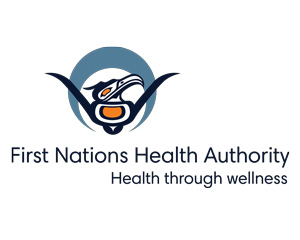My name is Joshua Wesley. I am Gitxsan/Tsimshian from Gitsegukla. I am in the Wilps Wiigyet Sea Bear (Grouse/Fireweed) Killer Whale clan on my mother's side.
For my active wellness, I like hunting with my friends and family. We hunt moose, elk, goat, grouse, caribou and black bear in our territory. We process the meats we get and distribute them to our community. Hunting is important for me because I am out on the land, connecting with my friends and my family, and learning from older ones.
I have been hunting ever since I was a little boy. My dad has been taking me out and teaching me the traditional ways – how to hunt properly and prepare things according to our traditions.
We hunt in different ways depending on what animal we are after, and it is nice being out and active however we are doing it. For moose hunting, we take our side-by-side (vehicle) up to different clearings on forest service roads. Depending on where you find and shoot the animal, you will need to drive or walk farther into the bush. For goat hunting, we drive to the base of the mountain in a truck, ATV or side-by-side, and then hike up. For black bear, we wait until mid-fall when they are out eating blueberries. We smoke the meat for two to three days, then vacuum seal it.
Where we find the animal and what animal it is also affects how we prepare and process it. For example, when we get a goat, we will skin it and put it in a pack board to bring back. For black bear, we will not use a pack board. We will move it to a vehicle, then haul it back to the village. For moose, it depends on the season and where you get it. During the fall, we try to hold off skinning and processing until we get to our smokehouse so that it has less dirt and fur on it. In the winter, it can be skinned next to the truck, as dirt is not a worry. Once we have the animal in the smoke house, we let it sit there for two to three days to drain the blood. Then we hand out meat to everyone who helped, and Elders.
We get many different foods from hunting. Stew meat is the main one; we cube and jar it for later. We also grind moose meat and make hamburgers. We get bone marrow out of the front and back legs. Other parts we eat are the tongue, the nose, the liver, the heart, and the kidneys. We make things like Indian bacon, smoked ribs, and steaks from the rump. Every now and then, we will get a guy from the village to make head cheese as well, which is pretty cool. We take as much out of the animal as we can so as not to waste much.
I have noticed the climate changing over time, and it worries me. The last time I went out hunting was in the middle of October to get a moose. We normally get our moose above the village but there was not enough cold and snowy weather this year. The weather was so warm late in the year, which makes it harder for the moose to come down the mountains, and pushes the rut later into the year. Additionally, the wolves are “overkilling" the moose population in the area we hunt. For the first time ever, we had to travel further up north in the fall to get a moose. I am concerned about this – hunting is important to my family and my culture.
Hunting is definitely important for my wellness. It feels comforting to have friends and family all with me enjoying each other's company. It is good for my fitness and it gets me the traditional foods I like. The older ones share their stories and their pasts with their dads and uncles, and it is cool to learn different ways all together. I am worried that the old ways are slowly dying off now. Some people are not interested in learning the old ways anymore, but it is important for me to keep learning.
Don't forget to share photos or posts of your participation by emailing it to active@fnha.ca or tagging us on social media to encourage and inspire others. The FNHA Wellness Initiatives Team will select a winner from the submitted posts in the first week of July. (Make sure to use the hashtags #FNHAWellness, #30x30ActiveChallengeFNHA and #BeActiveFNHA.)

